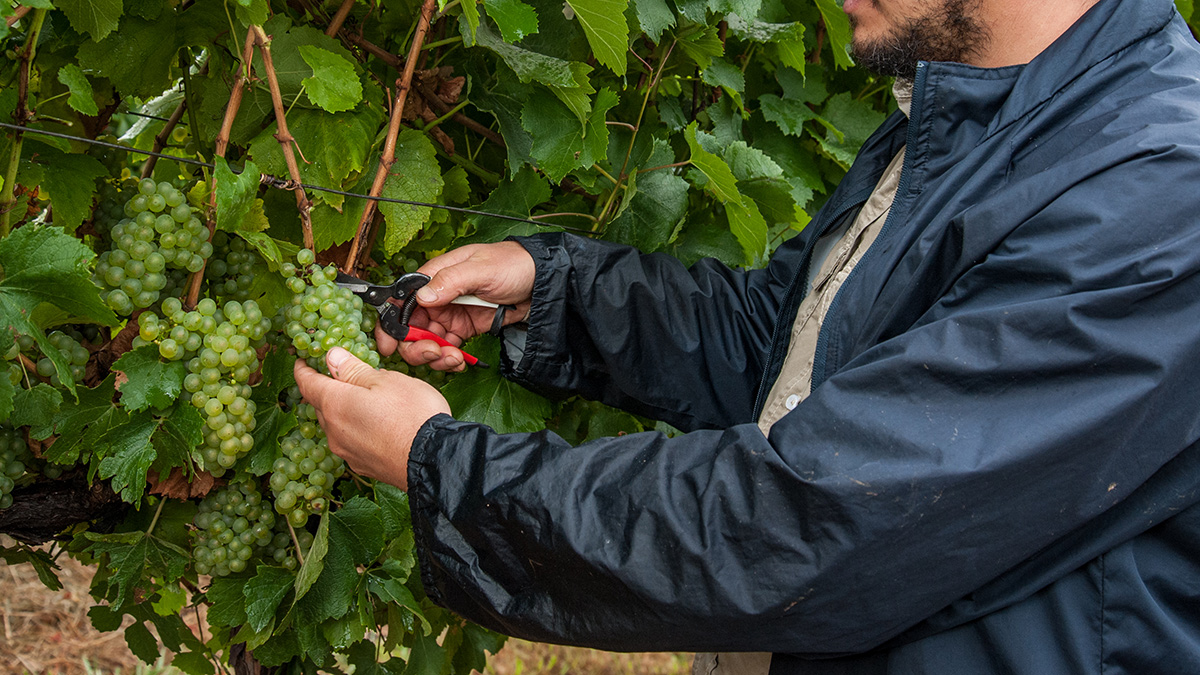Get our independent lab tests, expert reviews and honest advice.
How to give to charity so your donation really counts

With so many charities calling and asking for money these days, weighing up whether or not to donate can be a stressful and emotionally draining experience.
On this page:
- How do I choose a good charity?
- How to avoid getting scammed
- Who's making money from your donation?
- ACNC – the national regulator on the scene
- How much of your money is going to the needy?
- More transparency needed
- Claiming tax deductions
Even if you took the time to do the research, it’s not easy to know whether the charity in question is worthy of your donation. The sector has long suffered from a lack of transparency.
And charities are not shy about getting in touch. The findings of a CHOICE research project released in September 2016 showed that a quarter of Australians receive calls from charities at least once a week, and 90% of the recipients find them pretty annoying. Older Australians are a particular target.
Overall, 89% of Australians receive at least one charity call in a given six month period.
One question that may spring to mind on such occasions is whether you can trust the person on the other end of the phone or, for that matter, out on the street.
You want to give, but you don’t want people taking advantage of your good nature.
It doesn’t help that charity callers are exempt from do-not-call registers, or that charities operating in Australia now number in the tens of thousands.
How do I choose a good charity?
It really comes down to which causes matter to you most, and which organisations you think will be the most effective.
Charity checklist:
- For domestic charities and commercial fundraisers, ask if they’re a member of Fundraising Institute Australia (FIA) and are registered with the Australian Charities and Not-for-profits Commission (ACNC), and verify that they are.
- Check that the charity is licensed by its state or territory regulator. Each state has different exemptions. In some states, religious organisations don’t need to be registered, for example.
- Do your own calculations by looking for the annual reports of charities online. You’ll need to flick to the end of annual reports for the figures. Compare fundraising revenue with fundraising costs and read the notes to financial statements to see how ratios are calculated. But bear in mind that high overhead costs doesn’t necessarily mean it’s a bad charity.
- If you’re making a donation to an overseas aid organisation, check that it’s a member of ACFID and, more importantly, a signatory to its Code of Conduct.
How to avoid getting scammed
- Be aware that scammers often pose as legitimate, well-established charities.
- Scammers also come up with their own charity names, and pretend to be victims of natural disasters.
- Scammers will cold-call and direct-message people and create fake websites and pages on social media to fool donors.
- Avoid fundraising pages on platforms that fail to verify the legitimacy of the fundraiser or that fail to guarantee your money will be returned if the page is determined to be part of a scam.
- Crowdfunding requests can also come from scammers. Check the terms and conditions of funding platforms and ensure you are dealing with official organisations. If you are unsure, make your donation to an established charity instead.
- If you think you have paid money to a scammer, contact your bank immediately and ask for a chargeback on your payment card.
Who’s making money from your donation?
Worst of all, it’s rarely the actual nonprofit charity that’s doing the calling, but rather a for-profit charity marketing firm whose revenue depends on getting people to donate.
One of the biggest such firms operating in Australia, Appco Group, became the subject of a class action lawsuit in 2016 made up of about 8000 former workers who claimed to have been severely underpaid, overworked and subject to degrading workplace rituals if they didn’t meet their weekly fundraising targets.
It’s these for-profit firms, and these allegedly exploited workers, who are usually the ones calling to ask for money, not the charity itself
Another firm that raised money for Amnesty International and Wesley Mission, Australian Sales and Promotions, copped a substantial fine in 2016 for paying workers below minimum wage.
It’s these for-profit firms, and these allegedly exploited workers, who are usually the ones calling to ask for money, not the charity itself.
It makes deciding whether or not to give that much harder.

ACNC – the national regulator on the scene
In a positive development for the sector, a national regulator – the National Charities and Not-For Profits Commission (ACNC) – was launched in 2014.
Previously, charities were regulated by a mishmash of state and territory agencies, and to some extent they still are.
The ACNC’s mission is to provide a central, Australia-wide repository of information on charitable organisations. At last count, there were 57,514 charities registered with the regulator.
Charities that take part in the scheme must keep records, comply with certain governance standards and provide a report to the ACNC every year.
How does the ACNC help consumers?
While the ACNC doesn’t pry open the doors of charities to let you see exactly where each dollar you donate is going, it does let you verify that a charity is a legitimate organisation with obligations to a national regulatory body – something that was previously lacking.
Thousands of charities that failed to meet the ACNC’s annual reporting obligations were kicked off the register
Thousands of charities that failed to meet the ACNC’s annual reporting obligations after it launched were kicked off the register, thereby losing their access to federal tax concessions that let donors claim a credit for donations.
If you have questions or concerns about a charity, we recommend that you check to see if it’s registered with the ACNC as well as with the relevant state and local agencies. Since December 2016, charities registered with the ACNC have carried an ACNC tick of approval.
If it’s not on the ACNC register, it’s probably a good idea to find a charity that is more demonstrably worthy of your donation.
How much of your money is going to the needy?
One of the most vexed questions for consumers around charitable giving is how much the charitable organisation gets versus how much the downstream recipients get.
Administration costs and other overheads – including the salaries of the people who work for the charity – can eat up large portions of the money you donate.
Is it a better charity if a bigger cut goes to the needy?
Not necessarily, and it’s really not feasible to compare administrative versus service costs between charities, because each measures such expenditures in different ways. Uniform standards have long been lacking in this area.
As the ACNC says:
“The main problem with using administrative costs to inform decisions about which charities to support is that the information is an unreliable indicator of the extent to which actual donations make a difference in the community.”
“Some charities make a real difference in the community and have relatively high administration costs, and some charities may be less effective but have low administration costs.”
Some urban-based charities may pay higher rent for their headquarters, for instance, and some may spend more money than others on measuring the impact of their work, leading to better outcomes for recipients.
More transparency needed
Still, the numbers can be jarring. Earlier CHOICE research revealed that some charities receive as little as 10% of the money raised at fundraising events after total costs are taken into account.
On the flip side, we’ve found examples where close to 100% of the money donated made its way to the cause (often because the charity’s fundraising costs are being subsidised by another part of its operations or business).
While considerations of administrative versus service costs (if you can find such information) shouldn’t unduly influence your choice of a charity, consumers are understandably interested in such matters.
In an earlier CHOICE survey, 81% of respondents didn’t know how much of their donation reached a charity’s beneficiaries
In an earlier CHOICE survey, 81% of respondents didn’t know how much of their donation reached a charity’s beneficiaries after fundraising costs and overheads were subtracted. But over 90% of respondents said they wanted to know.
Our research has found major inconsistencies in the cost breakdowns given to charity donors – if they’re communicated at all. Sometimes the stats simply aren’t available, and there are no regulations in place (in Australia, at least) to make sure charities use a standard reporting method.

It seems fair to say that donors have a right to know how much of their money reaches beneficiaries, and to be able to compare charities. But unless and until standardised reporting is introduced, you’ll need to do your own research.
One straightforward way to do this is to access a charity’s annual report online, scroll to the back, and have a look at the financial figures. The report may also discuss overhead versus service costs.
Because of the lack of uniform reporting standards, there are unlikely to be moments of blinding clarity. But you can get a pretty good sense of a charity’s commitment to transparency compared to other charities from these documents.
Claiming tax deductions
Charity donations can be claimed on your tax return if your charity is registered as a Deductible Gift Recipient (DGR). This doesn’t affect the amount of money the charity actually receives, just what you’re entitled to deduct at tax time.
There are conditions about what you can claim. Donations must be at least $2 and you’ll need a receipt. Some gifts to DGRs – such as tickets to a charity dinner or ball – are generally not eligible.
You can check if an organisation is a DGR via the ABN lookup website. There’s also information about the deductibility of donations at the ATO.





